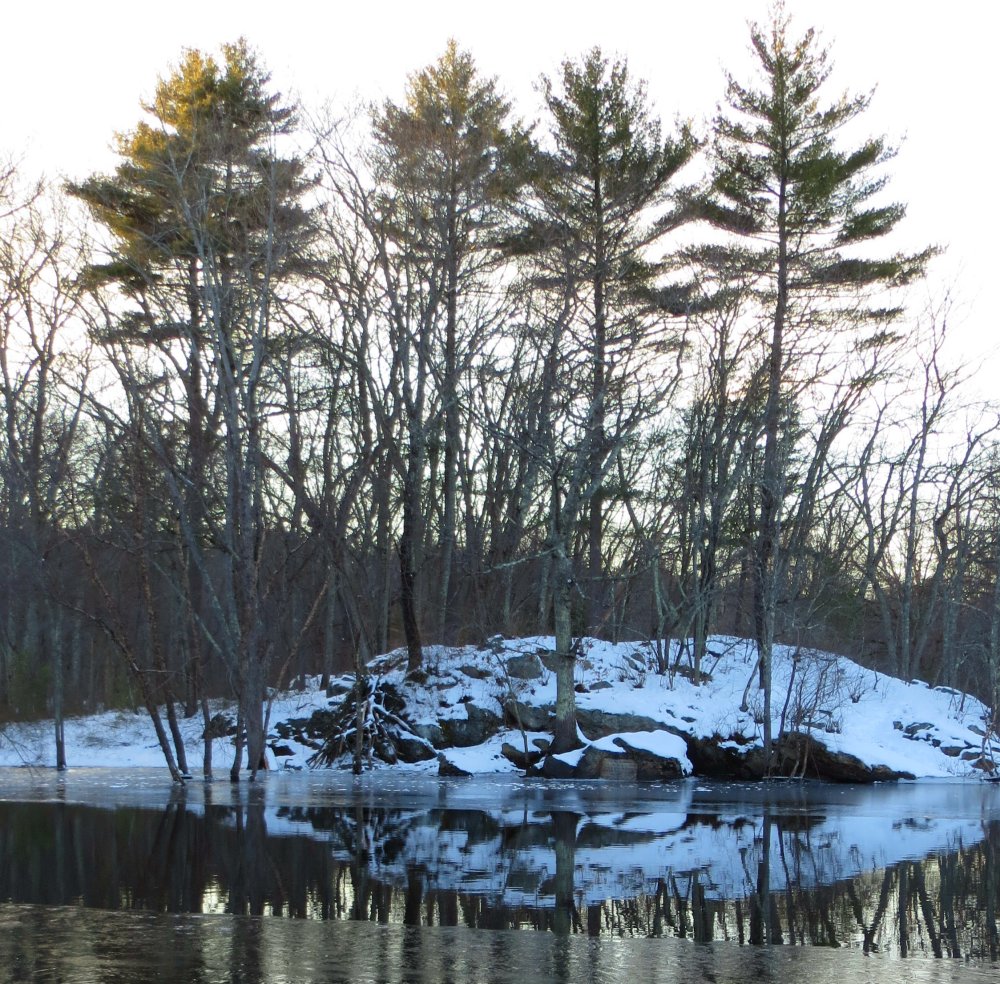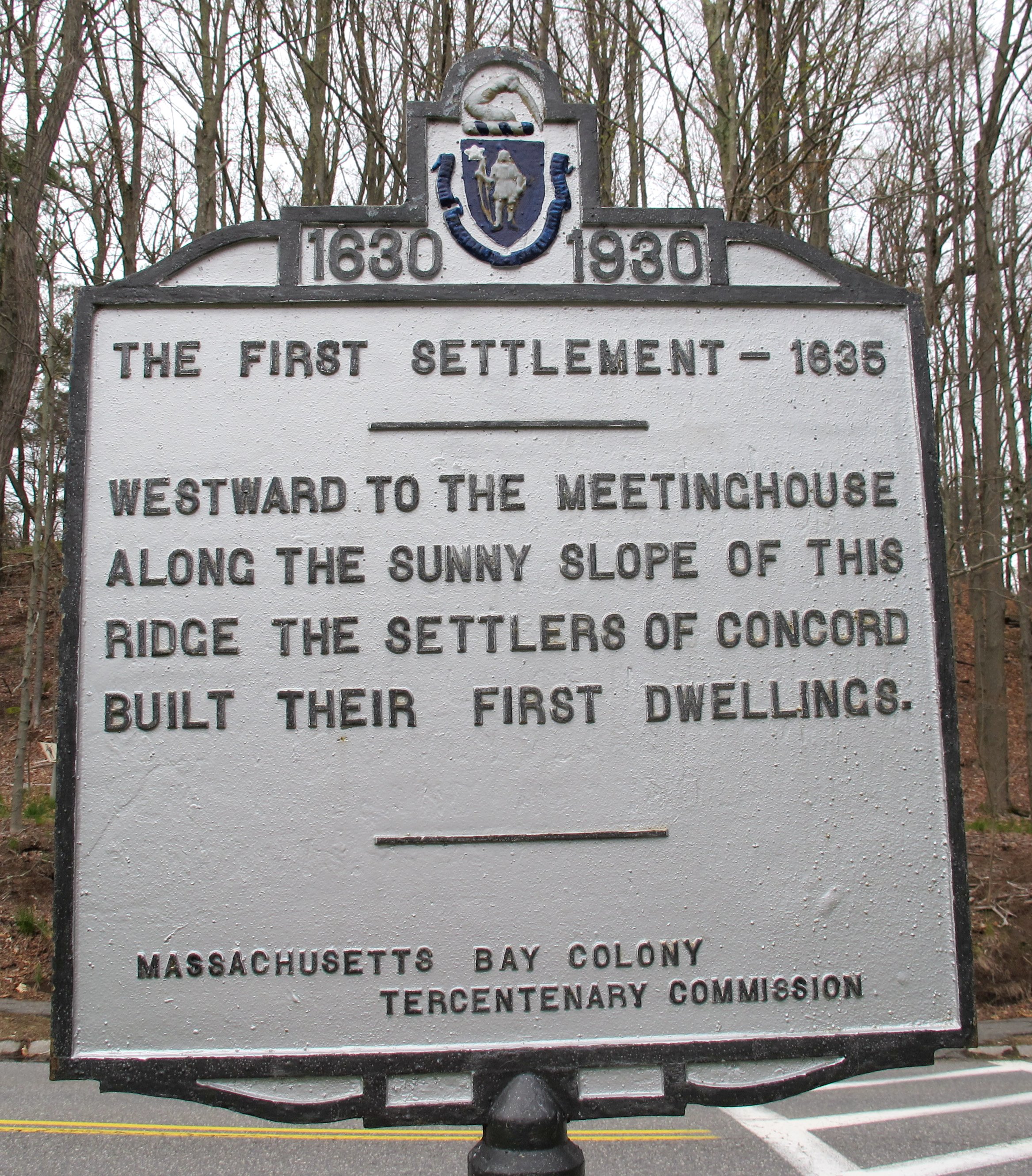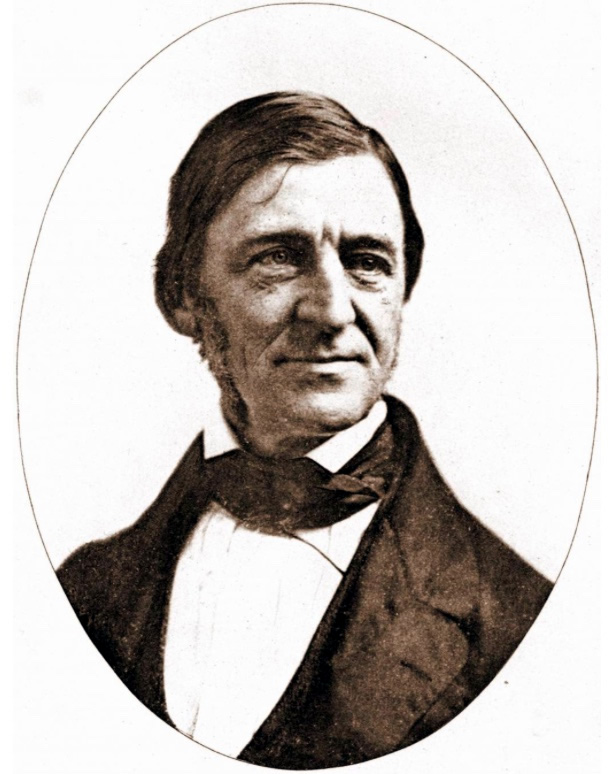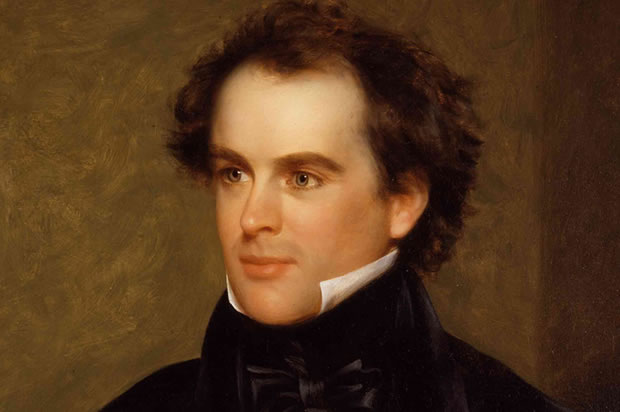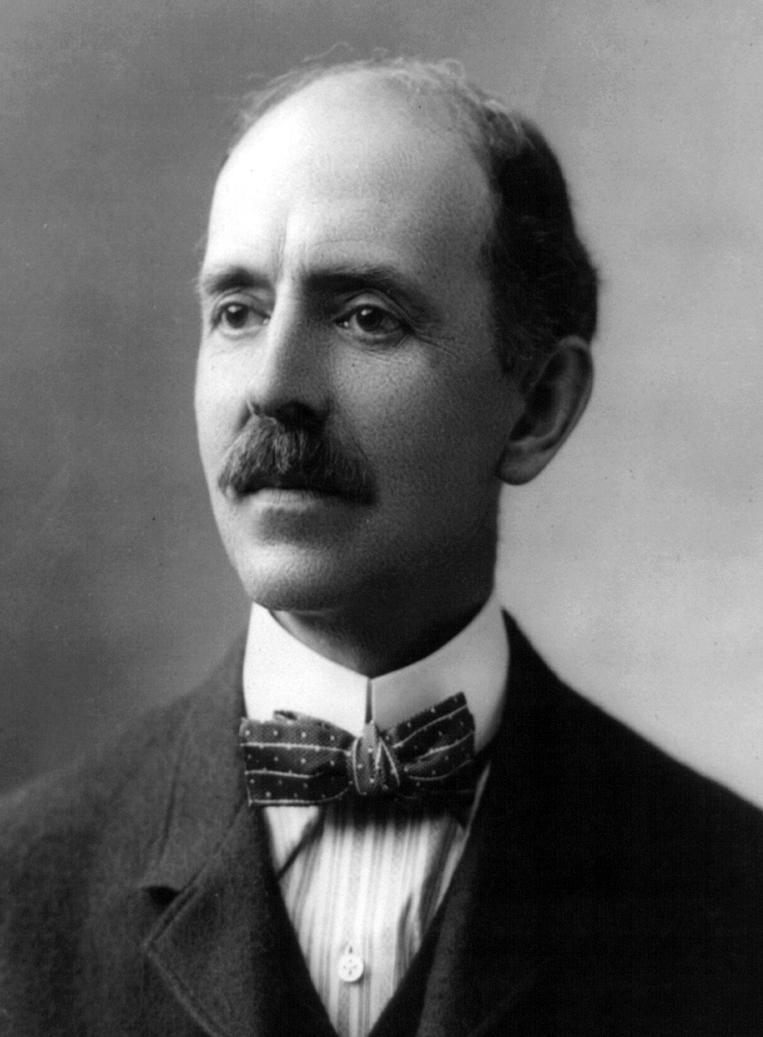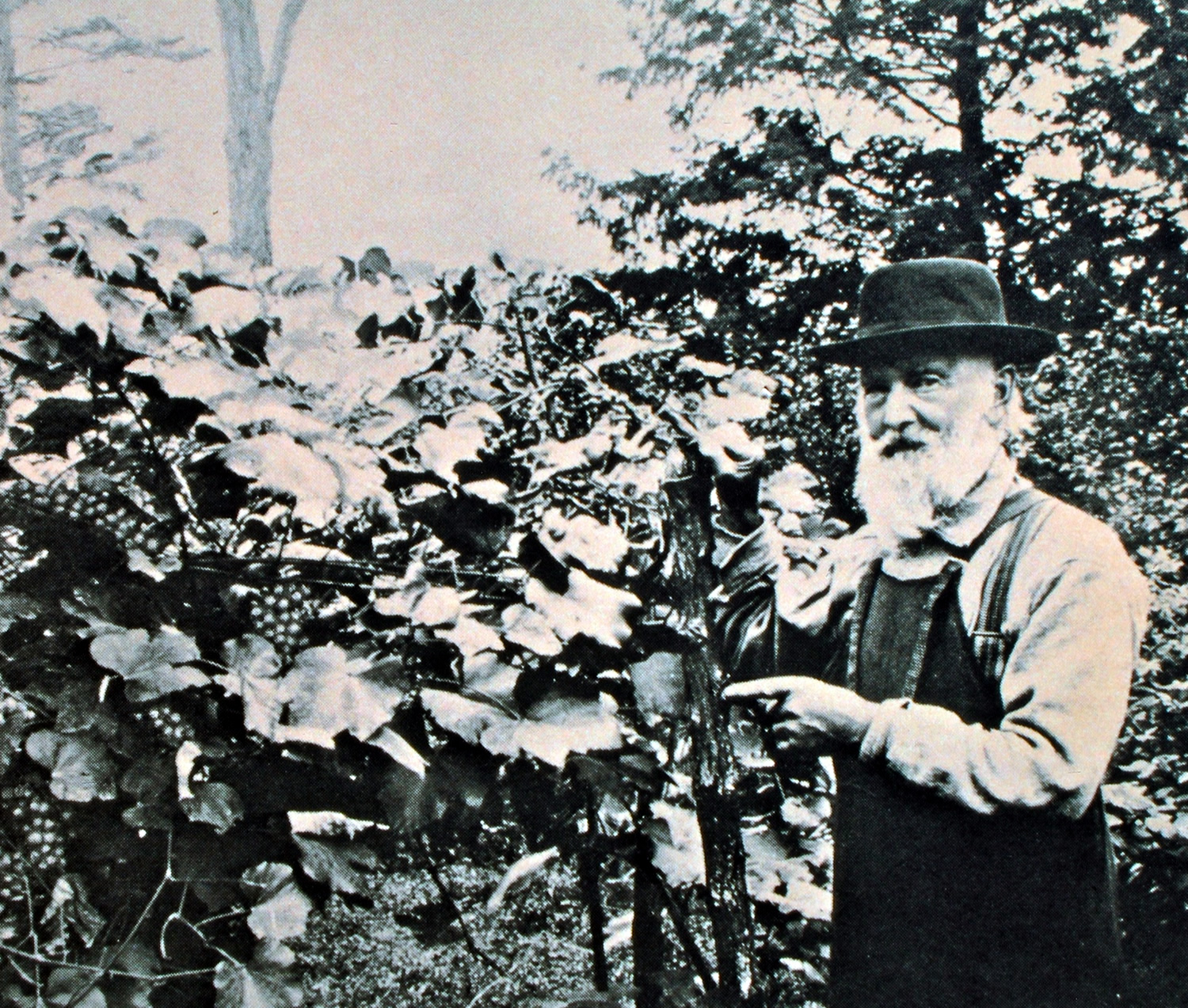Concord MA History
Founded only 15 years after the Pilgrims landed at Plymouth Rock, Concord has lived through great events during its nearly four centuries of history.

Artist paints at Old North Bridge.
- 1635 – Village named "Concord" founded at the Pennacook settlement of Musketaquid, first New England town beyond tidewater
- 1775 – Provincial Congresses held in Concord. First colonial victory in the Revolutionary War
- 1834 – Ralph Waldo Emerson moves to Concord
- 1840 – The Alcott family moves to Concord
- 1842 – Nathaniel & Sophia Hawthorne move to Concord
- 1845 – Henry David Thoreau builds a tiny house at Walden Pond and moves there to live
- 1860s – Concord serves as a station on the Underground Railway guiding escaped enslaved people to freedom in Canada
- 1875 – President Ulysses S Grant attends centennial commemoration ceremonies for the 1775 battle at Old North Bridge; Ralph Waldo Emerson reads his Concord Hymn, which is inscribed on the plinth of Daniel Chester French‘s statue, The Minuteman
Musketaquid & Nashawtuck
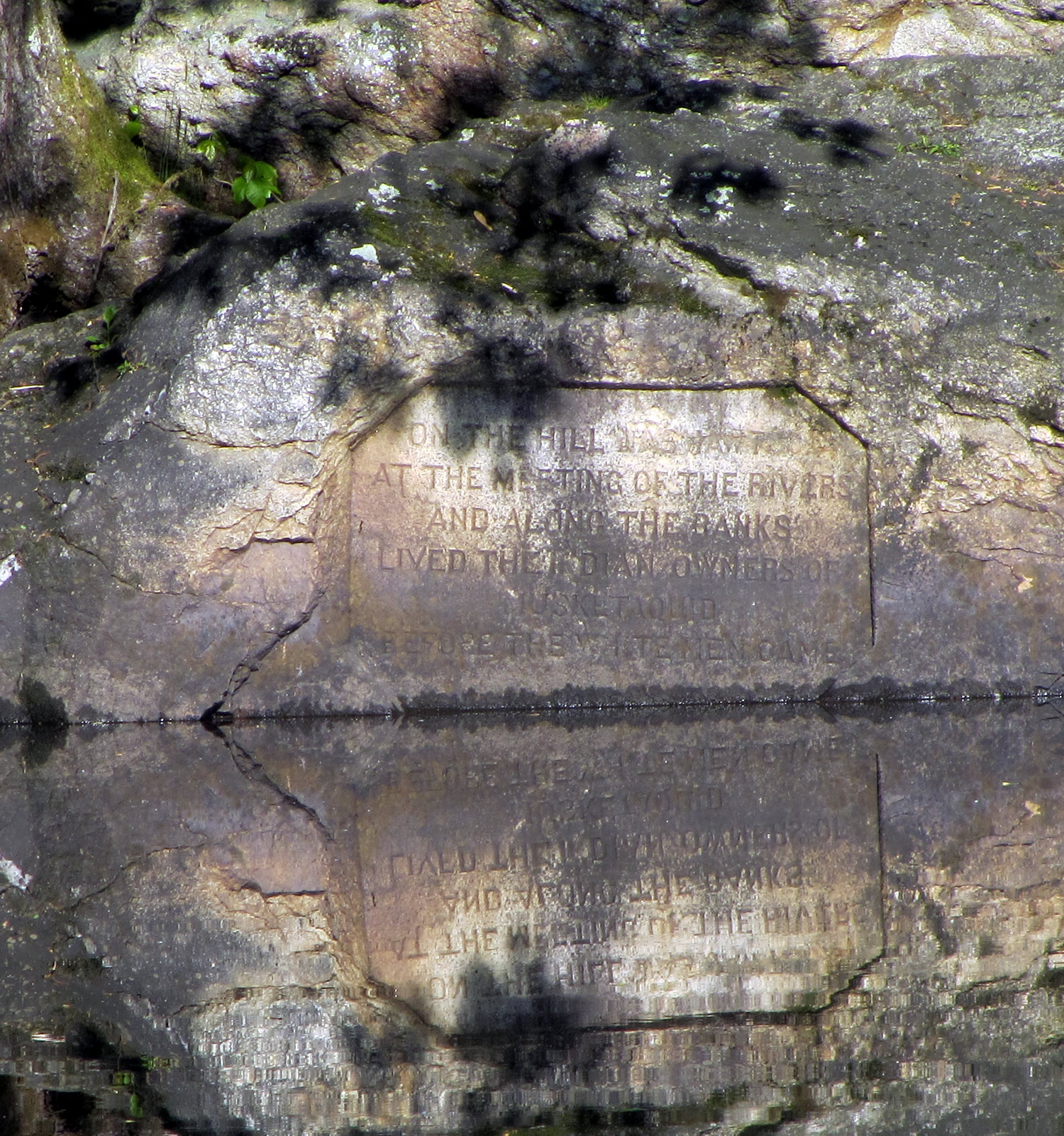
Inscription at the water's edge of Egg Rock (Nashawtuck), site of the original Pennacook settlement:
On the hill Nashawtuck
at the meeting of the rivers
and along the banks
lived the Indian owners
of Musketaquid
before the white men came.
Pennacook-Algonquian peoples lived here for thousands of years before the arrival of European explorers in the late 1500s and early 1600s. Some of these people chose a rocky outcrop at the confluence of two rivers for their settlement. They called the place Nashawtuck, “meeting of the rivers” in the area known as Musketaquid, “grassy plain.” The Concord River Valley was home to hundreds of families.
Through the centuries they differentiated the more fruitful, sunny patches of the thin, sandy, rocky soil in which to grow their crops of corn, beans, pumpkins and squash, fertilizing the seedings with fish leftovers. They hunted abundant game. According to early European settlers, they were larger and healthier than the Europeans of the time, with a more nutritious diet and a formidable array of natural cures for illness and injury.
But they had no immunity from the smallpox, bubonic plague, syphilis and other deadly diseases that Europeans brought to this new continent. During the first three decades of the 17th century, up to 90 percent of the indigenous population was wiped out.
Nashawtuck ("Egg Rock"), at the confluence of the Assabet and Sudbury rivers to form the Concord River.
Note the inscription rock right at river level.
English Colonists
Reverend Peter Bulkeley (1583-1659), a minister of the Church of England, was in trouble with Archbishop Laud over doctrinal matters and knew he would be removed from his congregation in Odell, England. He resolved to move to the colony of Massachusetts Bay to continue preaching in his own way.
In September, 1635, the General Court granted to Rev. Bulkeley, Major Simon Willard and others, “six miles of land square” at Musketaquid for their settlement, which was named Concord. Some of these twelve families moved to the area along Lexington Road between today’s Monument Square and Meriam’s Corner (around where the Alcotts’ Orchard House and The Wayside now stand) and built temporary lean-to dwellings into the hillside.
First Settlement Sign
First Meetinghouse
The following year (1636), the colonists built their first meetinghouse (church building) on the ridge to the north of Lexington Road, and established the Old Hill Burying Ground next to it.
In 1697, the South Burying Place was established (on Main Street at Keyes Road).
In the early 1700s, the town built a new meetinghouse on the site of the present First Parish in Concord meetinghouse (church building). In 1774 and 1775, delegates to the First and Second Provincial Congresses convened in the Concord meetinghouse, well away from the British colonial government in Boston.

Old Hill Burying Ground
Revolutionary Concord
Early on the morning of April 19, 1775, colonial militia in Concord and neighboring towns received word that a force of 700 “Regulars” (British soldiers) were on their way to search and destroy military supplies which British spies had reported being gathered at Concord.
Word of the bloody battle on Lexington Green was rushed to Concord where the Minutemen, now numbering about 250, retreated across the North Bridge over the Concord River in the face of the superior British force.
The British commander established his headquarters in the Wright Tavern and set his troops on the search for arms. Seven companies (about 100 men) were sent to cross Concord’s North Bridge and proceed to Barrett’s Farm, where British intelligence had determined that military equipment was hidden. A small force of about 95 soldiers under an inexperienced commander, Captain Walter Laurie, was ordered to secure the bridge.
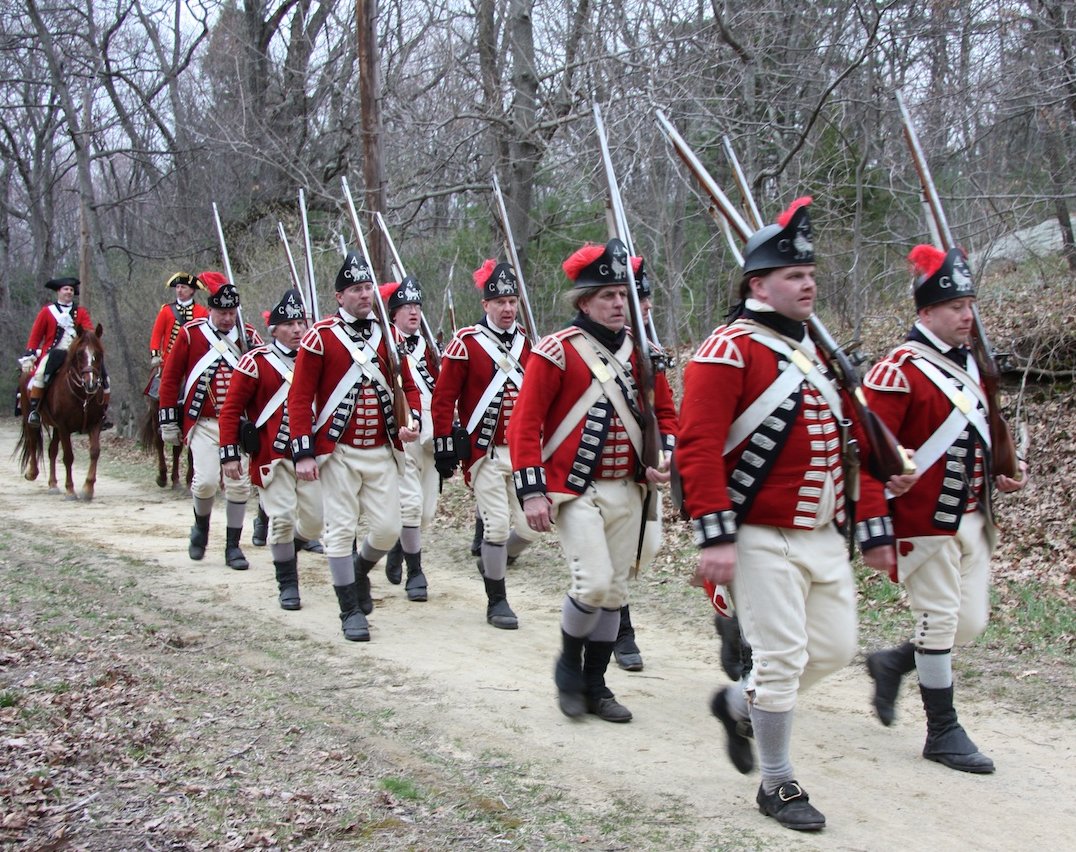
A column of Redcoats marches toward Concord.
"Will You Let Them Burn the Town Down?"
The Concord Minutemen took up positions atop Punkatasset Hill, only 300 yards (274 meters) northwest of the bridge, as reinforcements of Minutemen and other militia from surrounding towns—Acton, Bedford, Lincoln and Sudbury —continued to arrive, augmenting their force to about 400 men.
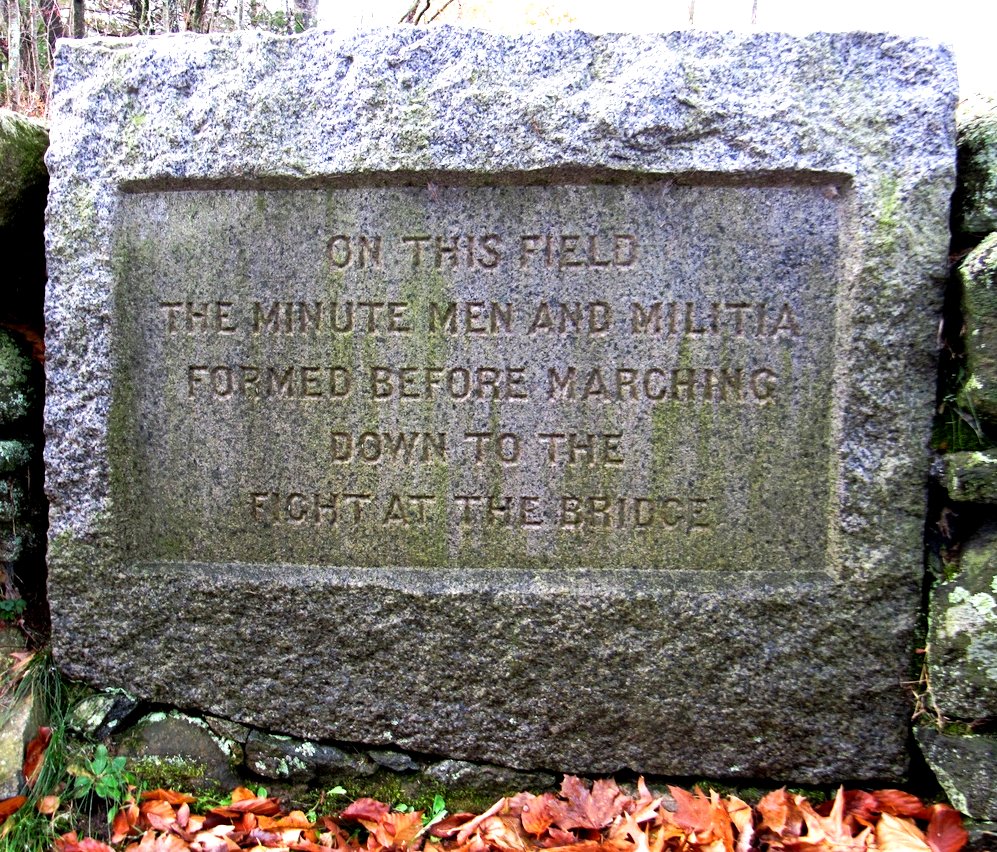
Inscription by the summit of Punkatasset Hill: "On this field the Minute Men and militia formed before marching down to the fight at the bridge."
As the redcoats in the center of Concord pursued their mission, they discovered and burned some wooden gun carriages (cannon mounts). The fire spread to the meetinghouse, and the smoke rising from the town, easily visible from Punkatasset Hill, convinced the Minutemen that the British were burning their homes.
“Will you let them burn the town down?” Adjutant Joseph Hosmer cried as a call to action.
First Revolutionary Victory
The Minutemen advanced down the hill under orders to fire only if fired upon. The British force holding the bridge retreated across the bridge. A redcoat officer began to remove planks from the bridge in order to slow the Americans’ advance, which only angered the Minutemen.
When the two forces were only about 50 yards (46 meters) apart, a shot rang out—most probably from an exhausted, inexperienced, frightened British soldier. Hearing it, other British soldiers began to fire as well, and the Minutemen responded.
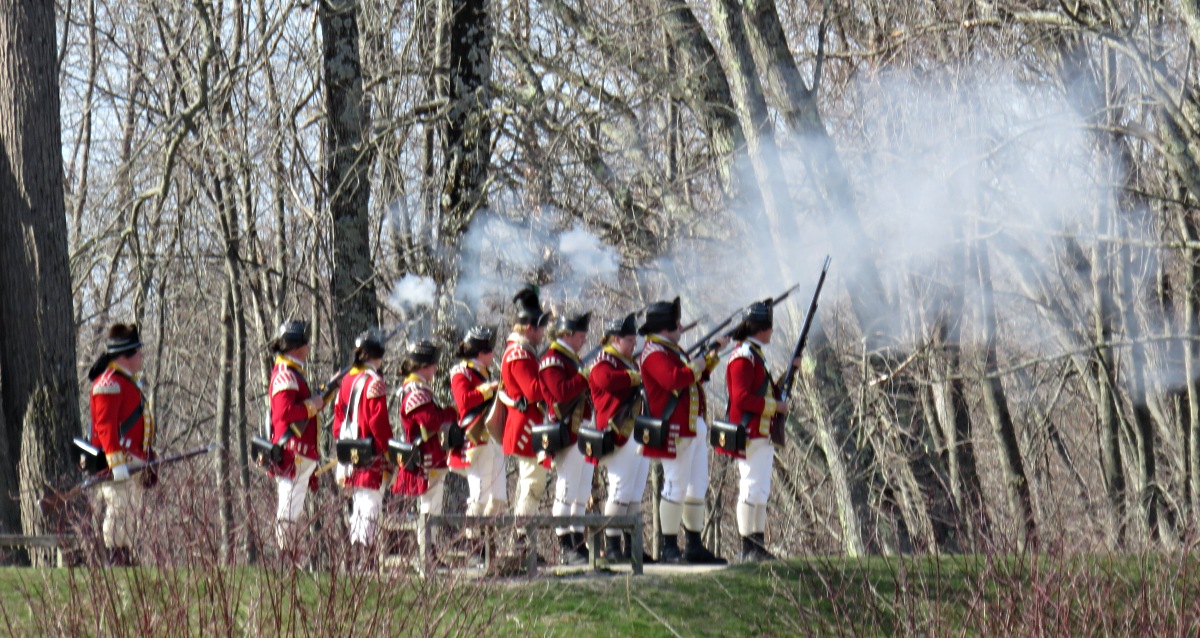
Redcoats fire across the North Bridge ...
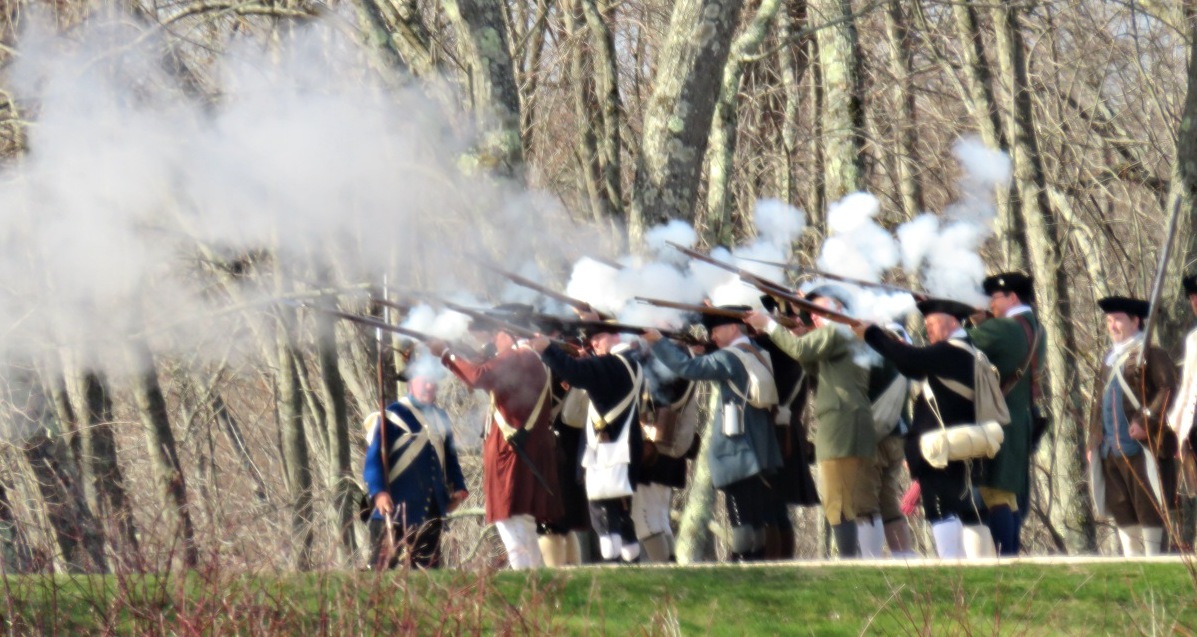 ...at Minutemen, who fire back.
...at Minutemen, who fire back.
The battle lasted only a few minutes, but when the musket smoke cleared, half of the British officers were wounded, and a dozen of their troops were dead or wounded. They retreated toward the town seeking reinforcements.
Patriots Day
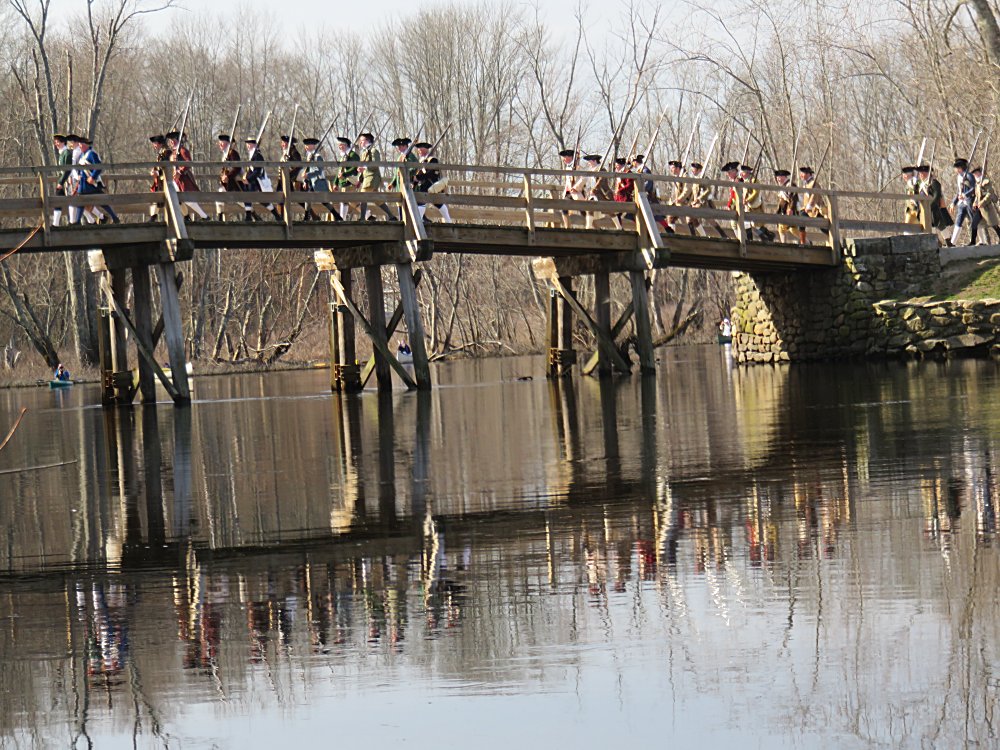
Minutemen march over the bridge.
The "shot heard ’round the world" was fired from the Minutemen’s muskets at Concord North Bridge, where this band of farmers held off the world's most renowned professional soldiers.
But this first victorious battle of the Revolutionary War was truly won by the colonial militias as the British retreated toward Boston. Sniping from behind trees and stone walls along the road back to Boston, Minutemen brought the British casualty count up to 200—nearly a third of the entire expeditionary force—a grievous and embarrassing loss for the powerful, well-equipped forces of the Crown.
News of the events in Lexington and Concord spread like wildfire through the British colonies in America, forcing every American to choose sides: would one be loyal to the Crown, or committed to the revolutionary cause? There was no middle ground.
Each year, on the Monday closest to April 19th, Patriots Day (a holiday in Massachusetts), the battles of Lexington and Concord are re-enacted to commemorate the beginnings of the American Revolutionary War.
Literary Concord
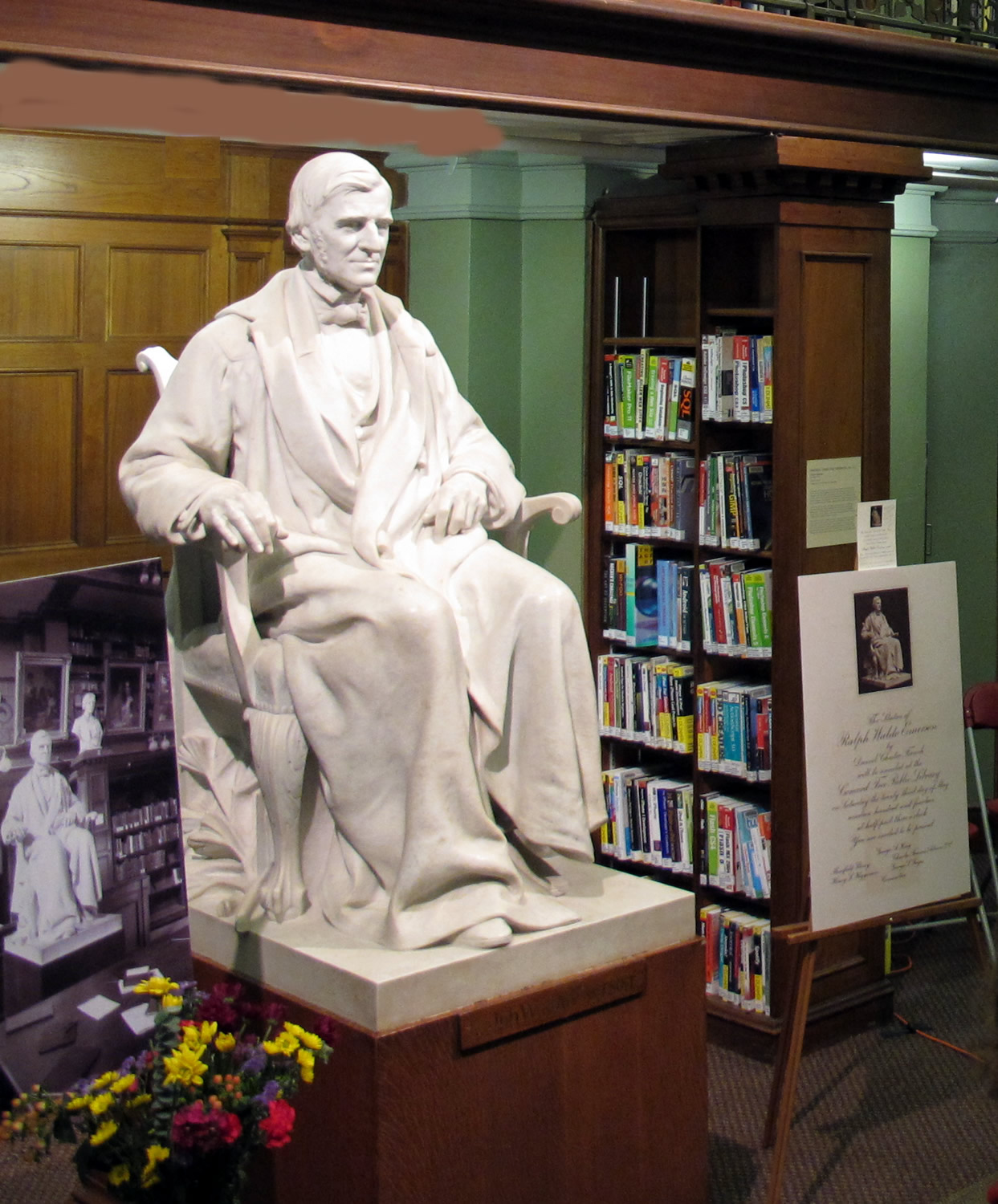
Ralph Waldo Emerson, by Daniel Chester French, in the Concord Free Public Library.
Until the 1830s and ’40s, Americans looked to Great Britain and Europe for literary and philosophical guidance, but in those years American thinkers and writers began to form a distinctly American literature.
Ralph Waldo Emerson (1803-1882) moved to Concord in 1834 to live in his grandfather’s house, the Old Manse, right next to Old North Bridge. In 1840, Bronson Alcott brought his family, including young Louisa May Alcott, to Concord to live at The Wayside, and later Orchard House. In 1842, newly-married Nathaniel Hawthorne and his bride Sophia Peabody rented the Old Manse from Emerson to be their first home.
In 1845, native Concordian and Harvard graduate Henry David Thoreau built a small cabin on Emerson's land near the shore of Walden Pond, and left his family home to live, observe nature, and write in the cabin for two years, two months and two days.
All of these literary lights and others lived, wrote, and enjoyed one another’s company in mid-century Concord. Their works and their fame spread throughout the world and continue to spread today.
Concord is still a “writers’ town,” with an annual Festival of Concord Authors which has featured such literary lights as historian Doris Kearns Goodwin, Wicked author Gregory Maguire, MIT professor Alan Lightman, and many more.
Also in the 1800s, Concord amateur botanist Ephraim Wales Bull developed the Concord grape which became the foundation of a nationwide taste for Concord grape jelly and sweet wine promoted by the Welch’s company.
Concord Today
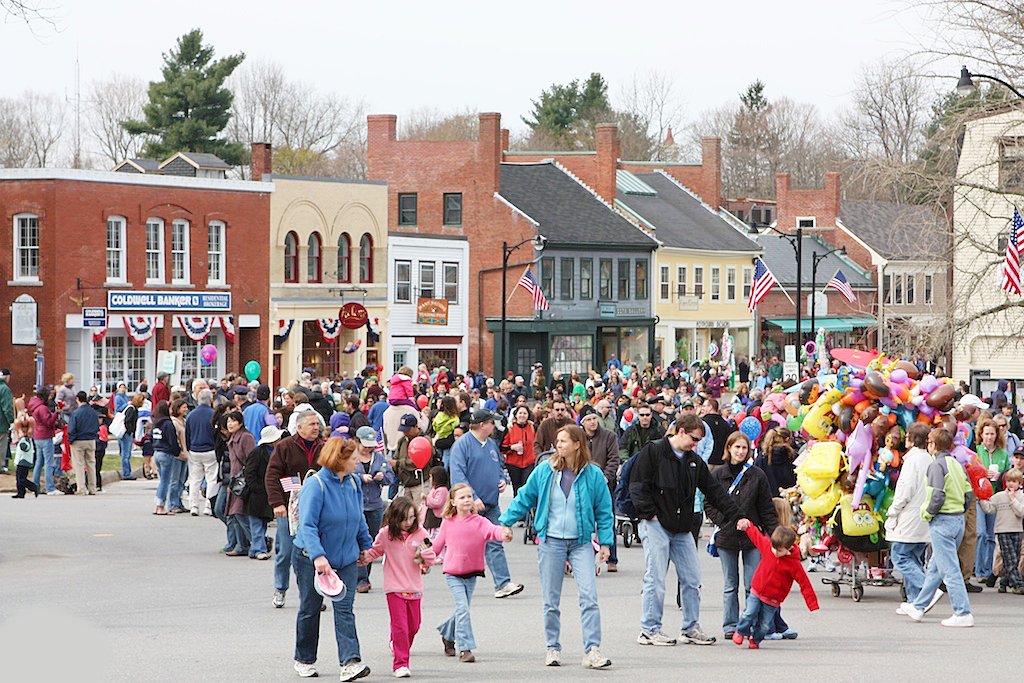
Patriots Day crowd on Main Street.
Concord, Massachusetts is a town of nearly 18,000 inhabitants in Middlesex County, 20 miles (32 km) west of Boston, part of the Greater Boston statistical area. Its original 1625 size of “six myles of land square” has grown to nearly 26 square miles (67 square kilometers). Today, Concord boasts over 1400 acres (567 hectares) of conservation land: forests, fields, waters and parks.
In the cherished tradition of New England direct democracy, the annual Town Meeting brings together Concord citizens at the public high school for discussions and votes on all major town budget and other decisions, which are then carried out by a Select Board (town council) and professional Town Manager.
Many Concordians commute (or tele-commute)to nearby towns and to Boston for work, but Concord has its own thriving business community, including Emerson Hospital, some light industry, shops and professional offices.
Concord is home to three fine high schools and a number of primary and middle schools both public and private.
Concord-Carlisle High School (CCHS) ranks in the top 10% of Massachusetts public high schools. Private schools include Concord Academy (founded 1922) and Middlesex School (founded 1901).
Famous Concordians
Because of its eminent citizens, Concord has always had a larger presence in American culture than a town of its size would otherwise enjoy. Concord writers and thinkers, in particular, have left their mark on our national and indeed on world culture.
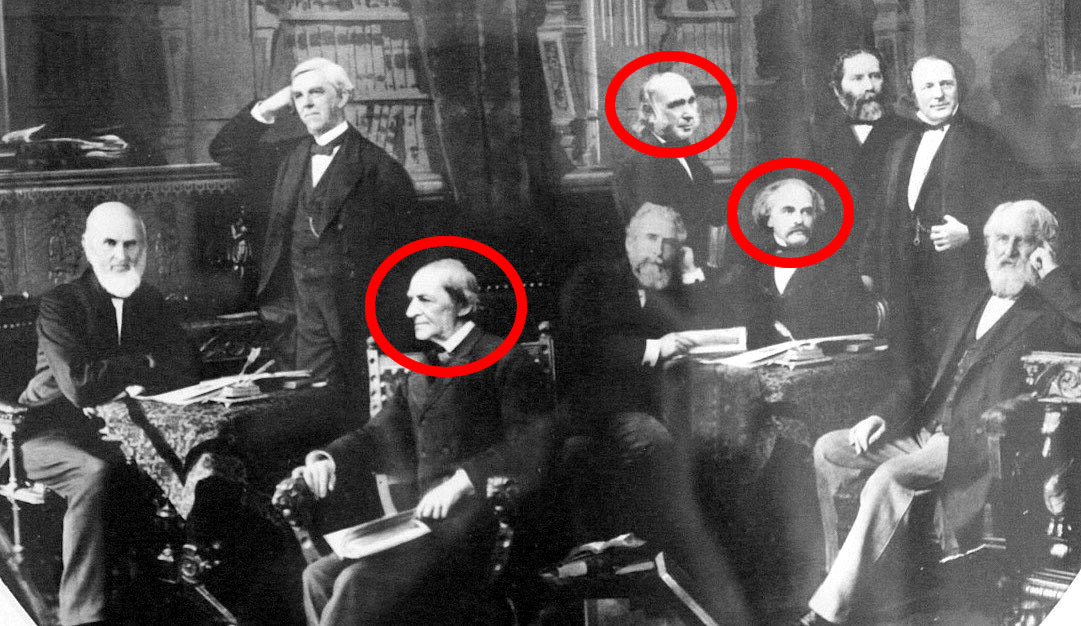
A fanciful montage of 19th-century Boston-area literati. Circled: Emerson, Bronson Alcott & Hawthorne. Notice that the two most famous Concord authors in our time—Louisa May Alcott & Henry David Thoreau—are not included.
Henry David Thoreau
Henry David THOREAU (1817-1862). Writer, individualist and spiritual philosopher, laid the foundations for conservation and ecology in 19th-century America. Visit the farm where he was born, a replica of the cabin he built at Walden Pond, look at some of the houses he occupied in Concord, and visit his grave in Sleepy Hollow Cemetery on Authors Ridge, all on Walking Tour 4.
Louisa May Alcott
Louisa May ALCOTT (1832-1888) wrote Little Women, the most successful young adult novel of all time. You can visit two of the houses she occupied in Concord, as well as her grave on Authors Ridge, on Walking Tour 2.
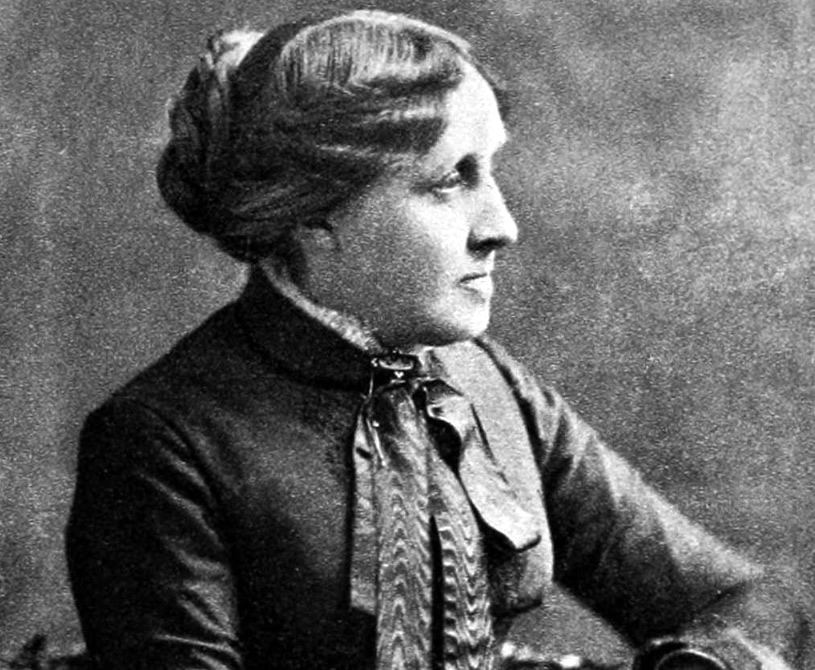
Louisa May Alcott's Little Women, a best-seller in her time, has spread around the world in dozens of translations, and has never been out of print.
Ralph Waldo Emerson
Ralph Waldo EMERSON (1803-1882) was America’s first great philosopher and man of letters, a founder of Transcendentalism, and a world-famous poet and author. Visit his Concord home and his study at the Concord Museum, wander along the Emerson-Thoreau Amble trail to Walden Pond, and see his grave on Authors Ridge, all on Walking Tour 4.
Nathaniel Hawthorne
Nathaniel HAWTHORNE (1804-1864) established the American short story as an art form with his Twice-Told Tales, and went on to write best-sellers The Scarlet Letter and The House of the Seven Gables. Visit two of his Concord homes (The Old Manse & The Wayside), and his grave on Authors Ridge.
Daniel Chester French
Daniel Chester FRENCH (1850-1931), renowned sculptor of The Minuteman at Concord’s Old North Bridge, the seated Abraham Lincoln in the Lincoln Memorial in Washington, and many other works. Visit The Minutman, his Mourning Victory at the Melvin Memorial in Sleepy Hollow Cemetery, and his grave on the ridge behind the Memorial.
Ephraim Wales Bull
Ephraim Wales BULL (1806-1895) developer of the Concord grape at Grapevine Cottage, his home in Concord. See the cottage, his original grapevine, and the monument to his work on Walking Tour 2; and his grave (with his first name misspelled) in Sleepy Hollow Cemetery on Walking Tour 3.
